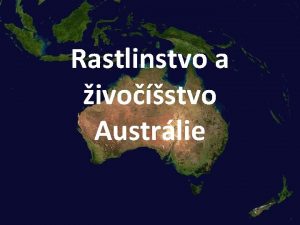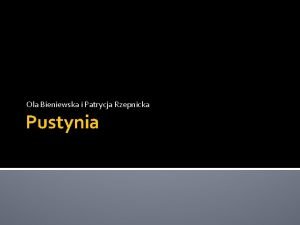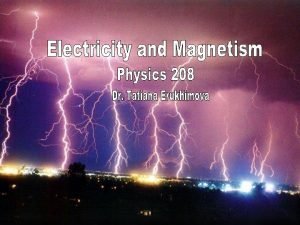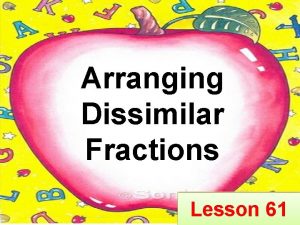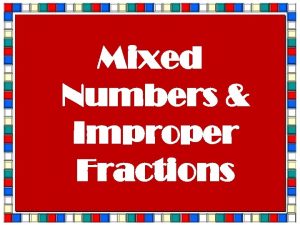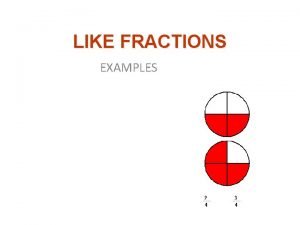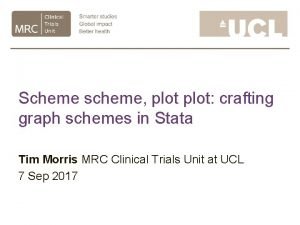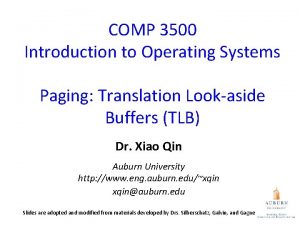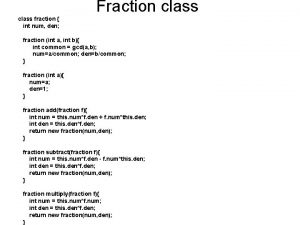Soil scheme of MOLOCH first atmospheric level fraction















- Slides: 15

Soil scheme of MOLOCH first atmospheric level fraction of model box covered by snow f. SNOW fraction of vegetation f. VEG air specific humidity above the interface soil skin temperature Climatological layer

Soil and vegetation properties • f. VEG • L. A. I. • ZROOT • q. WILT, q. REF • q. MIN, q. MAX • WK W • G • b • GC G • • Fraction of vegetation (seasonal function) Leaf Area Index (seasonal function) Root depth (m) Evapotranspiration range (m 3/m 3) Minimum and maximum water in soil (m 3/m 3) Coefficient of water diffusivity in soil (kg/m 2/s) Hydric potential (m) at saturation Exponent of hydric potential Dry soil thermal capacity per unit volume (J/m 3/o. K) Emissivity (function of water content and vegetation) Albedo (function of water content and vegetation)

Physical and numerical constants used in the scheme Thermal conductivity of snow in Watt/m/o. K Prognostic fields mass of water (kg/m 2) deposited over vegetation Snow height (m of equivalent water) Diagnostic fields Drag coefficient Turbulent fluxes of heat and specific humidity (positive upward) and radiation fluxes (positive downward) Efficiency of evapotranspiration (depending on temperature, insolation, and L. A. I. )

Saturation of surface air at time t fraction of model box covered by vegetation and free of snow fraction of wet leaf efficiency of root pumping weighted by the layer depth

Definition of q. SKIN at current time t Air specific humidity over wet leaves Air specific humidity over bare soil and pools (ZG is the surface wetness) coefficient of molecular diffusivity of vapor into air

Atmospheric vertical diffusion Updated specific humidity at first atmospheric level Updated drag coefficient of humidity and temperature (over land only) Turbulent flux of specific humidity (kg/m 2/s) positive upward Turbulent flux of heat (Watt/m 2) positive upward

Humidity flux disaggregation using the updated value of q 1 Flux over snow in kg/m 2/s Flux over the fraction of wet leaf Evapotranspiration from the fraction of dry leaf and from the k-th soil layer (kg/m 2/s) Humidity flux over the fraction of bare soil and pools (it conserves water exactly).

Residual precipitation and WVEG update Precipitation intercepted by leaves (it can be negative) WVEG update Computation of residual precipitation at the ground - When the intercepted precipitation is negative, the (negative) specific humidity flux increases the residual precipitation (in parole povere, rugiada che cade a terra)

TSKIN : soil temperature at the upper interface from flux balance Surface heat exchange coefficient 1 Numerical limitation thermal diffusivity of ground (heat flux from the ground) Newton step

Snow height update 1 -Fall-Sublimation (melting parameter) 2 -Melting (Kg/m 2/s) 3 -Snow fraction update

Water flux and content update of the first soil layer (m 3/m 3) Kg/m 2/s Flux correction

Water flux and content update of the second soil layer (m 3/m 3) Flux correction

Internal heat exchange coefficients If both 1 and 2 are equal to their upper bounds, T 1 G at new time step becomes the arithmetic average between TSKIN and T 2 G (due to diffusive terms alone).

T 1 G tendency: irreversible mixing and heat diffusion heating due to heat exchange with snow at air temp. T 1 heating due to mixing with rain at air temp. T 1 Cooling due to melting snow heat capacity at new time level heating due to mixing with water diffused from below (including root pumping) heating due to mixing with melted snow at freezing temp. diffusion of heat cooling (heating) due to the increase (decrease) of evaporating water/ice to temperature TSKIN

T 2 G tendency Final temperature update Runoff
 Moloch query examples
Moloch query examples Moloch tŕnitý
Moloch tŕnitý Pustynia piaszczysta to inaczej
Pustynia piaszczysta to inaczej Moloch netflow
Moloch netflow A first course in atmospheric thermodynamics solutions
A first course in atmospheric thermodynamics solutions How to find a fraction of a fraction
How to find a fraction of a fraction Dissimilar fractions meaning
Dissimilar fractions meaning Mixed number to improper fraction
Mixed number to improper fraction Like fractions example
Like fractions example Living soil vs dead soil
Living soil vs dead soil What are the four spheres of the earth
What are the four spheres of the earth 3 domain scheme and 5 kingdom scheme
3 domain scheme and 5 kingdom scheme Stata graph schemes
Stata graph schemes Ponzi scheme vs pyramid scheme
Ponzi scheme vs pyramid scheme Which fertilizer is high in nitrogen
Which fertilizer is high in nitrogen Page table
Page table

